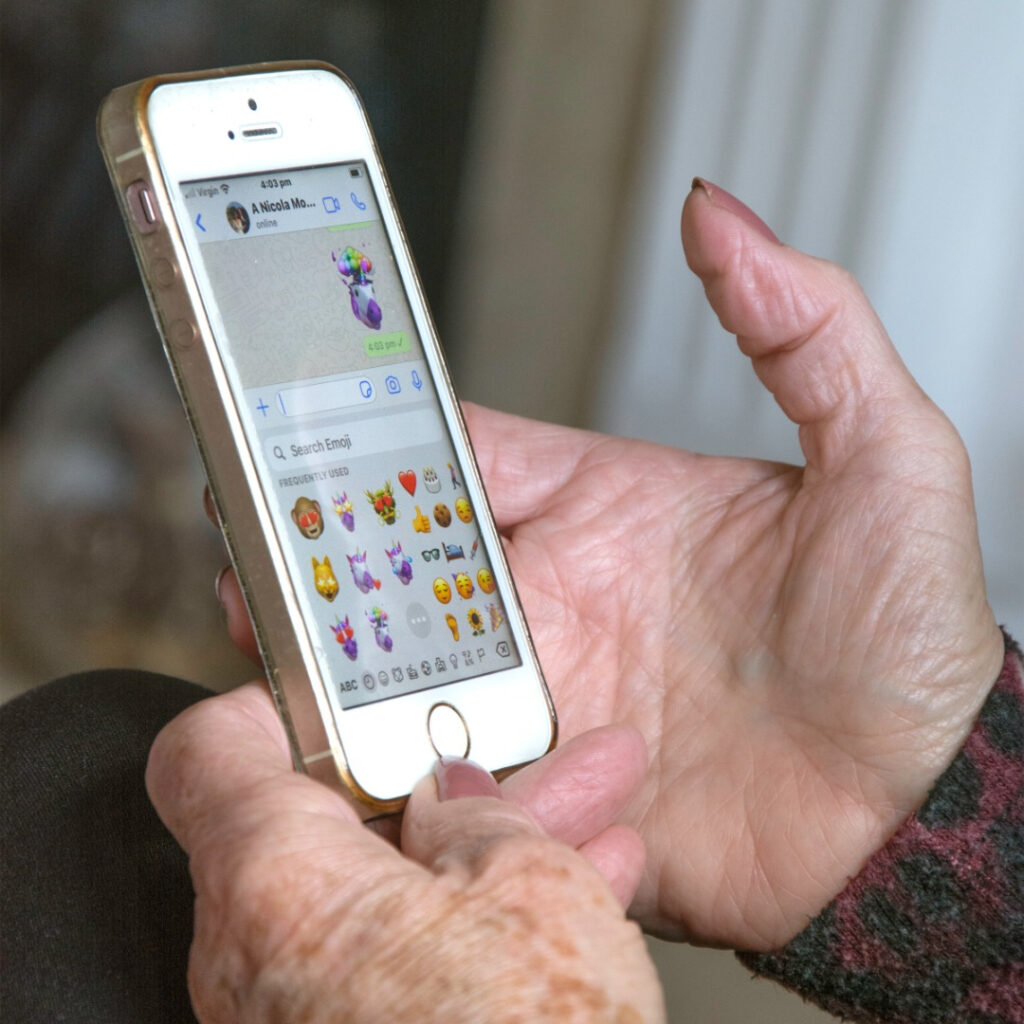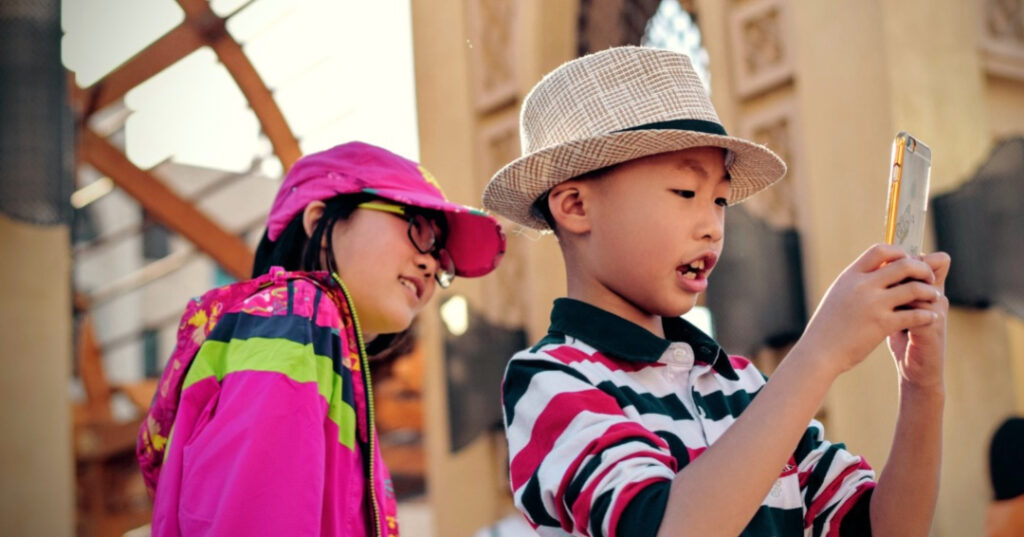Blog
How do different generations use social media?
At native, we’re in the business of bringing students together – and UK students belong to multiple generations. It’s rare to find a melting pot of Gen Zs, Millennials, Gen Xs and Baby Boomers all in one place. But visit a university campus, and that’s exactly what you’ll find.
According to HESA student enrolment data from 2021-2022, around 64% of the UK’s 2.8 million students fall into Gen Z. 26% are Millennials, 9% are Gen X, and 0.6% are boomers. On balance, Gen Alpha are currently too young to be enrolled in higher-education institutions. Also, these figures are very much approximations – HESA doesn’t organise data according to generational cohorts – but they give you a rough idea.
But of course, there are broad differences between the generations, and no place emphasises these differences quite like social media. Our research shows that all the generations spend about 4.8 hours on social media per day – but that’s where the similarities end. Here’s a breakdown of how they’re spending that time on social.
Baby Boomers
Age: Baby Boomers are born between 1946 and 1964, which makes them aged 59-77 in 2023.
Find them on: Facebook, Whatsapp, Youtube
How Baby Boomers use social media:
To get tangible brand information. According to Sprout Social, Boomers despise “irrelevant” content from brands – i.e. anything that isn’t about what you sell, or where they can buy from you. This is a rare and curious similarity between Boomers and Gen Z – our own research found that 18-24-year-olds prefer to see product-related content and imagery from brands. In other words, they want brands to be brands!
To click “share”. The “share” functionality is built with Boomers in mind. In fact, they’re 19% more likely to share pre-existing content on social media than any other generation. For a generation of people less-acquainted with digital platforms, it’s a way to participate and amplify without creating content themselves, with a simple click of a button.

On their computers. Later-gen social media platforms such as TikTok and BeReal have adopted an app-first approach, but it’s worth stressing that Boomers don’t consume social content via smartphones. One in three Boomers will purchase an item they saw on social using their desktop computer, compared to one in four who do so on their mobile devices. The way Boomers use social media means that a desktop computer is a more efficient option – they’re more likely than younger generations to read longform social content, or use a printer to get a hard copy of social posts.
To alleviate loneliness. Unfortunately, Baby Boomers are a generation particularly prone to loneliness – something else that they share with younger Gen Z students. Studies have shown that many older adults turn to social media platforms like Facebook and Instagram to ease loneliness. They’re using platforms in highly personal contexts – keeping in touch with family and friends; sharing photos and keeping an eye on their wider social networks. As disheartening as it is to picture a lonely older generation, there’s good news. 84% of Boomers say that their forays into social media have impacted their lives positively and helped them to feel more connected.
Gen X
Age: Born between 1965 and 1980, Gen Xs are aged 43-58.
Find them on: Facebook, Whatsapp, Instagram
How Gen Xs use social media:
To interact with brands. Gen Xs aren’t afraid to be vocal if they’re not happy with your brand. According to Sprout Social, almost all Gen Xs (95%) expect a reply to complaints or feedback they share on social media.
On the daily. Despite (and maybe because of) growing up with no social media, Gen Xs are now prolific users of it – second only to Gen Z in terms of daily usage.
To keep their careers alive. While many Gen Xs are approaching retirement age, they show no signs of slowing down in terms of work. Some are reluctant to forego security and routine, while others simply can’t afford to. For this reason, Gen Xs are well-represented on LinkedIn, where they are known to share a mix of professional and leadership content mixed in with personal news and life updates.

To share their kids. Speaking of the personal – you’ll see a lot of sharenting from this generation. While Millenials and Gen Zs are now parents in their own rights, it was Gen X who kicked off the habit of sharing updates about their children on social media. And they’ve never really stopped. 92% of US kids have a presence online due to their parents’ social media activity.
While some argue that sharenting is a way to keep family and friends in the loop as a child grows up, others have been quick to point out the controversies. At what age, after all, can a child consent to being depicted on social media? Can parents determine their children’s boundaries? These are all big questions – but for now, expect a proliferation of kid-related content from parents on social media.
Millennials
Age: The Millennial age range is one of the most disputed, but it’s roughly 1981 to 1996. This means that if you’re aged 27-42, you can call yourself a Millennial.
Find them on: Instagram, Youtube, WhatsApp
How Millennials use social media:
To keep on top of trends. Social media trends wash over all of us – but they tend to stick on the feeds of younger Millennials. 25-34-year-olds are the most trend-focused age cohort, with 52% using social media to keep on top of trends vs 40% of 16-24-year-olds. Older Millennials, however, aren’t as fussed – only 36% of 35-44-year-olds keep up with social media trends.
As a personal diary. Our research shows that older Millennials are most likely to use social media in a confessional, diaristic way – one in five do this, compared to a 16% average. Millennials’ first forays into the internet were on platforms like Myspace, Bebo, Piczo and Tumblr: personal microsites that have individual expression and customisation at their core. While many of these former juggernauts have been sent to the big website graveyard in the sky, their confessional, personal posting style lives on in Millennials. Today, they are the authors of long Facebook posts, architects of lengthy Twitter threads, and curators of artistic Instagram feeds. You can take away their platforms, but you’ll never break their souls.
For the tech. Our research into students’ social media habits shows that Millennials are far more interested in the techiest social media features, such as AR filters (21% are fans, vs a 7% average). They are driven by convenience, so anything that’s going to streamline their social media experience is a win-win.
To buy stuff. Social media has become synonymous with commerce in recent years – and nobody is more here for it than Millennials. They’re twice as likely as Gen Z to use social media for product research, and they are the biggest consumers of social media reviews. In-app shopping was also most popular among Millennials.
Gen Z
Age: again, it’s hard to pinpoint Gen Z exactly due to conflicting reports – but for argument’s sake, we’ll bracket them between 1997 and 2010. That makes them aged 13-26.
Find them on: TikTok, Instagram, Snapchat
How Gen Zs use social media:
For friendship. Younger students (18-24 year olds) are most likely to use social media to connect with friends – 81% do this compared to 73% of 25-34 year olds and 57% of 35-44 year olds. This does come with its own problems, however – the style of content popularised by TikTok and Youtube can actually make some Gen Zs feel more lonely.
For content. If Millennials are tech-driven, Gen Zs are all about the content. Our research shows that they want to see posts that are entertaining (40%), authentic (28%) and informative (25%) – outranking their older peers in each category. And your format for connecting with Gen Z is, of course, video. This isn’t just a TikTok phenomenon; prior to the app’s viral explosion, Gen Zs were huge (and still are) champions of video-centric apps like Snapchat and Youtube. And they still are – TikTok, Youtube and Snapchat frequently rank among their favourite social media platforms.
To platform hop. You’ll likely have heard a number of platforms described as Gen Z’s favourite over the past few years – and with good reason. TikTok, YouTube, Snapchat and Instagram are on their heavy rotation (with a smattering of disruptor platforms, such as Discord and BeReal, thrown in too).
These switching alliances tell us a lot about how Gen Zs use social media. A TikTok scroll hits differently to falling down a Youtube wormhole, and sliding into someone’s Insta DMs is not the same as maintaining a snap streak. So yes, Gen Zs’ favourite platforms will shift depending on what they want out of life. In case you’re curious, when we surveyed Gen Z students, TikTok came out on top – but ask them next month, and who knows?
Gen Alpha
Age: Members of Gen Alpha are born in or after 2010. The oldest of them will become teenagers this year. The youngest have just been born – meaning they’re aged 0 to 13.
Find them on: TikTok, Minecraft, Youtube
Ok, so they’re too young to be hitting up university campuses – but Gen Alpha are very much present on social media. Born in the 2010s or later, the oldest among them are approaching their early teens. Here are some early indicators of how they use social media:
For kidfluencers. Not unlike their Millennial parents and Gen Z cousins, Gen Alpha are most influenced by people just like them – in their case, kids. Not only are Gen Alpha aware of influencers, they’re perfectly capable of harnessing the purchasing power of their parents. More than half (55%) would want (their parents) to buy something if their favourite YouTuber or TikToker was seen with it.
For screen time. Not surprising for a generation who had internet access before they could walk or talk, Gen Alpha can be found on visual platforms such as Youtube and TikTok. Both platforms have pretty stringent privacy settings (and in Youtube’s case, the option to access a child-centric version of the platform).

For ASMR. Gen Alpha are being raised on baby sensory classes, so it’s not so surprising that they’ve graduated to love ASMR – Autonomous Sensory Meridian Response, for those not in the know. Content within the genre ranges from whispers and microphone tapping to soap shaving and slime pulling. The goal is to give the viewer a relaxing, tingling sensation. Perfect for a generation exposed to more stressors at a younger age.
To play. Remember all that hype about the metaverse a few years back? While Zuckerberg’s ambitious project has been reduced to a buzzword-gone-by, the sentiment behind it is alive and well with today’s tweens. Gen Alpha are gravitating to multiplatform sandbox games such as Roblox and Minecraft, creating worlds – and socialising with peers while they do so. It’s a glimpse into the recent past (Minecraft first went public in 2009) but also the future – Gen Alpha won’t be satisfied with likes and carousels. They will expect their social media platforms to contain multitudes.
No matter what the generation, students use social media to discover brands – 74% to be exact. To find out how you can meet them where they are, get in touch with us today.

